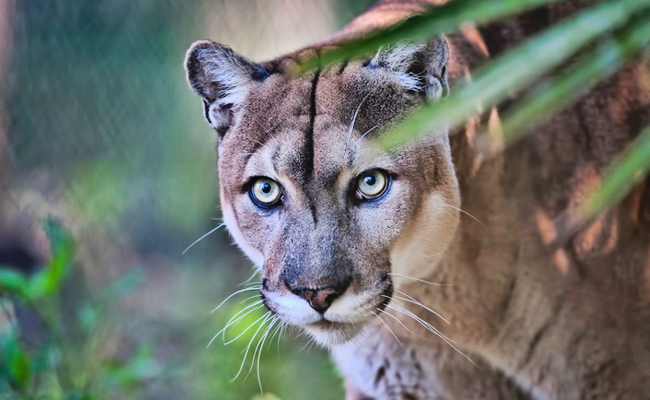Someone should tell the rest of Florida’s panthers they can come home.
Even though there’s just an estimated 230 Florida panthers still in existence, federal regulators are reconsidering their status as an endangered species.
The U.S. Fish and Wildlife Service is studying whether a slight uptick in panther population since 2014 is enough to change them from “endangered” to “threatened.”
Changing panthers’ endangered status could do away with some of their federal protections. It’s a move supported by developers and ranchers who bristle at limits imposed on using panthers’ ever-shrinking territory.
The Sun Sentinel opposes potentially weakening protections for the Florida panther. Instead of making things easier for big land owners, state and federal officials should boost efforts to protect open spaces and save Florida’s big cats.
Supporters of changing the endangered species status argue that panthers — driven away by sprawling development, pollution and over hunting — could survive without the same level of protection that has kept them from drifting into extinction.
If that’s the case, then surely there must be more than just 230 panthers prowling around out there somewhere.
Perhaps they are hiding in the subdivisions and shopping centers now spread over their bulldozed territory.
Maybe we just can’t see them as we speed over the roads and highways crisscrossing the hunting grounds panthers once roamed.
And if a revived population of Florida Panthers suddenly reappears, where exactly would we put them?
Central and South Florida was once their primary territory. Now suburbia reaching from Orlando to Miami isn’t going anywhere.
Through the decades, half of the Everglades has been drained to make room for development as well as a sea of sugar cane.
North of Lake Okeechobee, a big mouse turned panther land into a world of theme parks, hotels and other attractions that keep mushrooming across the landscape.
That’s the problem the panther has long faced. Its territory is disappearing. With every real estate sign heralding a new neighborhood under construction, the panther’s chance for a comeback shrinks.
Panthers are left with less than 5 percent of the territory they used to claim in Florida, according to the Florida Fish and Wildlife Conservation Commission. Their need for breeding and feeding space clashes with developers’ — and homebuyers’ — hunger for Florida real estate.
Panthers could soon get squeezed off even more land in southwest Florida. Nine property owners are asking for exemptions to federal protections for panthers and other endangered species for a new development that could spread across 152,000 acres in eastern Collier County.
Roadkill is another way to gauge the consequences of panthers crossing paths with mankind.
From 2014 through 2016, the number of Florida panthers killed by drivers (88) outpaced the number of panthers that were born (61), according to state wildlife officials.
The U.S. Fish and Wildlife Service says that reconsidering the panther’s endangered status is a standard practice that will result in a recommendation, not an immediate change to panther protections.
If a change from “endangered” to “threatened” is recommended, that would kick off more than a year of considerations for federal officials to decide what the new panther protection rules should be.
In the meantime, the public has until Aug. 29 to weigh in with comments on whether Florida panther protections should be changed.
The Florida panther’s road to recovery has been slow and remains too risky to dial back protections.
After the number of Florida panthers dipped into the 20s in the 1970s, prohibitions on killing panthers along with protecting remaining habitat and even bringing in panthers from Texas to help boost breeding have helped them rebound.
Federal and state officials in February announced that the panther population had grown to as many 230, up from about 180 in 2014. That’s welcome news, but not a reason to start changing the rules that helped panthers survive.
Development and other man-made pressures continue to squeeze out room for the panther. That makes it more important than ever to bolster, not diminish, protections for Florida’s remaining panthers.
To weigh in before the Aug. 29 public deadline, email comments to U.S. Fish and Wildlife Service biologist Dave Shindle at david_shindle@fws.gov. If you prefer to send a letter, the address is: South Florida Ecological Services Field Office, U.S. Fish and Wildlife Service, 12085 State Road 29 South, Immokalee, Fla., 34142.
Source: Sun Sentinel, Full Article






